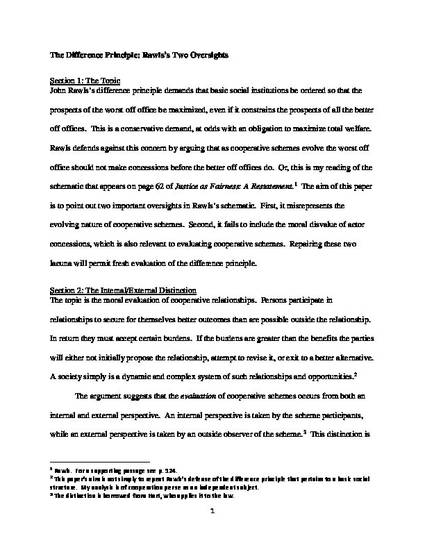
Unpublished Paper
The Difference Principle: Rawls’s Two Oversights
(2018)
Abstract
John Rawls’s Difference Principle demands that basic social institutions be ordered such that the prospects of the worst off office are maximized, even if it constrains the prospects of all the better off offices. This is a conservative demand, at odds with an obligation to maximize total welfare. Rawls defends against this concern by arguing that as cooperative schemes evolve the worst off office should not make concessions before the better off offices do. Or, this is my reading of Rawls’s schematic illustrations of the difference principle.
The aim of this paper is to point out two important oversights in Rawls’s offered schematic. First, it misrepresents that cooperative schemes evolves. This supports intuitions convenient to his argument, but it is not true to actual history. Second, his schematic fails to incorporate agent-relative concessions that are also relevant to evaluating cooperative schemes.
Consistent with Rawls’s literally schematic approach, this paper illustrates a way to geometrically express the aggregation of welfare, the equality of welfare, and agent concession. When properly articulated, these considerations support distributive principles that resemble the difference principle but are less demanding.
Keywords
- Difference Principle,
- John Rawls,
- Distributive Justice,
- Cooperative Schemes
Disciplines
Publication Date
Summer July 16, 2018
Citation Information
Adam White. "The Difference Principle: Rawls’s Two Oversights" (2018) Available at: http://works.bepress.com/adam-white/7/